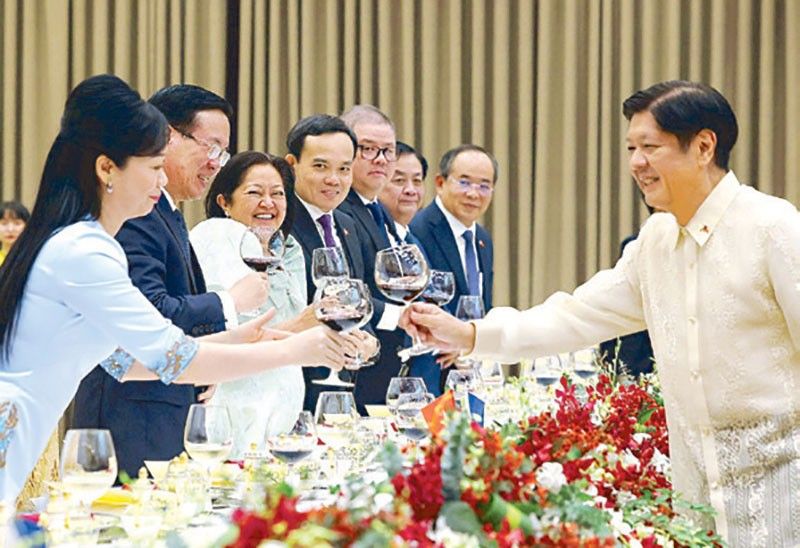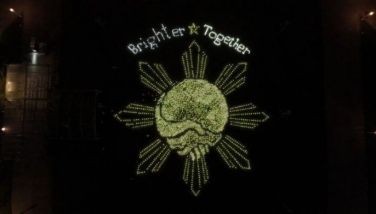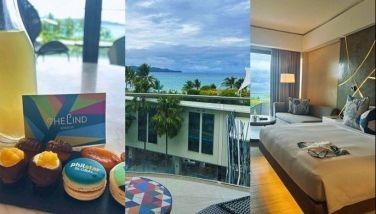Philippines, Vietnam setting up SCS hotline

MANILA, Philippines — A communication hotline between the Philippine Coast Guard and Vietnamese Coast Guard (VCG) that would hasten response to maritime incidents could become effective in a couple of months, according to PCG spokesman Rear Admiral Armand Balilo.
Balilo said a memorandum of understanding for maritime cooperation was signed during President Marcos’ state visit to Vietnam.
Marcos and Vietnamese President Vo Van Thuong witnessed on Tuesday the exchange of notes between the PCG and VCG on maritime cooperation, as well as the MOU on Incident Prevention and Management in the South China Sea between their ministries of foreign affairs.
The establishment of a hotline between the two coast guard agencies was signed by Admiral Ronnie Gil Gavan for the PCG and Major General Le Quang Dao for the VCG.
Gavan said this will enhance the strategic partnership and cooperation between the two coast guards toward promoting, preserving and protecting their mutual interest in the Southeast Asian region.
After the MOU signing, Balilo said the next step is for “parties from the two coast guard agencies to have a bilateral meeting, wherein the topics that they would discuss are the details on the implementation of the hotline which could be done in two months.”
“Other topics on the table could include discussions on possible joint exercises with the VCG such as on anti-piracy, boarding exercises, people-to-people exchanges and port calls,” he added.
Balilo earlier explained that putting up a “hotline of communication” between the PCG and VCG would also hasten their responses to emergency situations such as search and rescue operations and marine environmental protection responses, including oil spills.
It could also speed up coordination in case there would be missing Vietnamese or Filipino fishermen at sea.
Having a dedicated line of communication could also be useful in settling incidents in case Vietnamese fishermen would be caught poaching in Philippine waters by the PCG.
Balilo had also said that “while we have a Department of Foreign Affairs and its counterpart in Vietnam, there are coast guard matters that could already be taken up at the level of the coast guard.”
There might also be instances that a Vietnamese fisherman would decide to take shelter in the Philippines because of a storm or during rough sea conditions.
This would be the second “hotline of communication” of the PCG with another country. The PCG’s first memorandum signed was with China.
Code of conduct
The Philippines and Vietnam are close to establishing a code of conduct (COC) on the South China Sea, President Marcos said on Tuesday, a move described by Beijing earlier to be “null and void.”
“We’re pretty much there,” Marcos said in an interview with the Philippine media who covered his two-day state visit when asked about the status of the COC with Vietnam.
The two countries are both claimants in the disputed waterway, which is believed to have large reserves of oil and gas. China claims sovereignty over virtually all South China Sea islands and their adjacent waters.
While they have overlapping claims in the South China Sea, Marcos said the Philippines and Vietnam were not engaged in any confrontations.
“We don’t have any confrontations with Vietnam, as a matter of fact. Despite the fact that we have conflict about territorial waters, but it has never gone beyond any diplomatic contacts,” the President said.
Marcos said the MOU signed between the PCG and VCG on maritime cooperation is part of the two nations’ efforts to come up with a COC between Manila and Hanoi.
“Now if we don’t finish the code of conduct between ASEAN and China, I said let’s make it bilateral first, with members of ASEAN (Association of Southeast Asian Nations) so that we don’t have to worry that we will have problems with Vietnam, we will have problems with Brunei, we will have problems with Malaysia, etc. etc.,” he said.
In November last year, Marcos said the Philippines is negotiating a separate code of conduct in the South China Sea with Vietnam and Malaysia as he expressed dismay over the “slow progress” in forging a COC between ASEAN and China.
China, however, hit the idea of a separate COC among claimant states.
Chinese Foreign Ministry spokesman Mao Ning has warned that “any departure from the DOC framework and its spirit will be null and void.”
Chinese bases
At present, China has five fully militarized bases within the exclusive economic zone and continental shelf of the Philippines where ships and fighter aircraft are kept, maintained and deployed, according to Commodore Roy Vincent Trinidad, the Philippine Navy’s newly designated spokesman for the West Philippine Sea (WPS).
Trinidad, in an interview over dzBB yesterday, said China has functioning naval and military bases in Kagitingan (Fiery Cross), Mabini (Johnson), Juan Felipe (Whitsun), Zamora (Subi) and Panganiban (Mischief) reefs.
Some have facilities for supplies while others are used to dock ships and at least two have airstrips with war planes and military personnel.
Trinidad said China’s efforts to reclaim and transform the reefs into military bases started in the early 1990s when they claimed to build fisherman’s shelters in the area.
China later claimed to be doing it for scientific and maritime study only to develop the reefs into naval outposts.
In an earlier interview, Trinidad said it is difficult to estimate how many military and Chinese Coast Guard ships are inside the EEZ of the Philippines at any given time but within the enclosed safe harbor of Panganiban Reef, there are around 15 to 25 warships.
He said what the Chinese have more of are its maritime militia or fishermen that are used to employ gray zone tactics on orders of its military when needed.
Trinidad said these gray zone tactics are actions that are not in the books or are unclear if acts of war or not, which form part of China’s approach in claiming Philippine territorial waters.
Sovereignty
National Security Adviser Eduardo Año lashed out at China again yesterday over its repeated claims of sovereignty over Panatag Shoal in the WPS.
“Bajo de Masinloc (Scarborough Shoal) is an integral part of Philippine territory, being part of the Municipality of Masinloc, Zambales. It is located 124 nautical miles west of Luzon mainland and is well within the 200 nautical mile EEZ and the Philippine continental shelf,” he said in a statement.
He even explained that in early Spanish maps of the Philippines, including the 1734 Pedro Murillo Velarde Map, Bajo de Masinloc was always part of Philippine territory. – Helen Flores, Michael Punongbayan
- Latest
- Trending




























